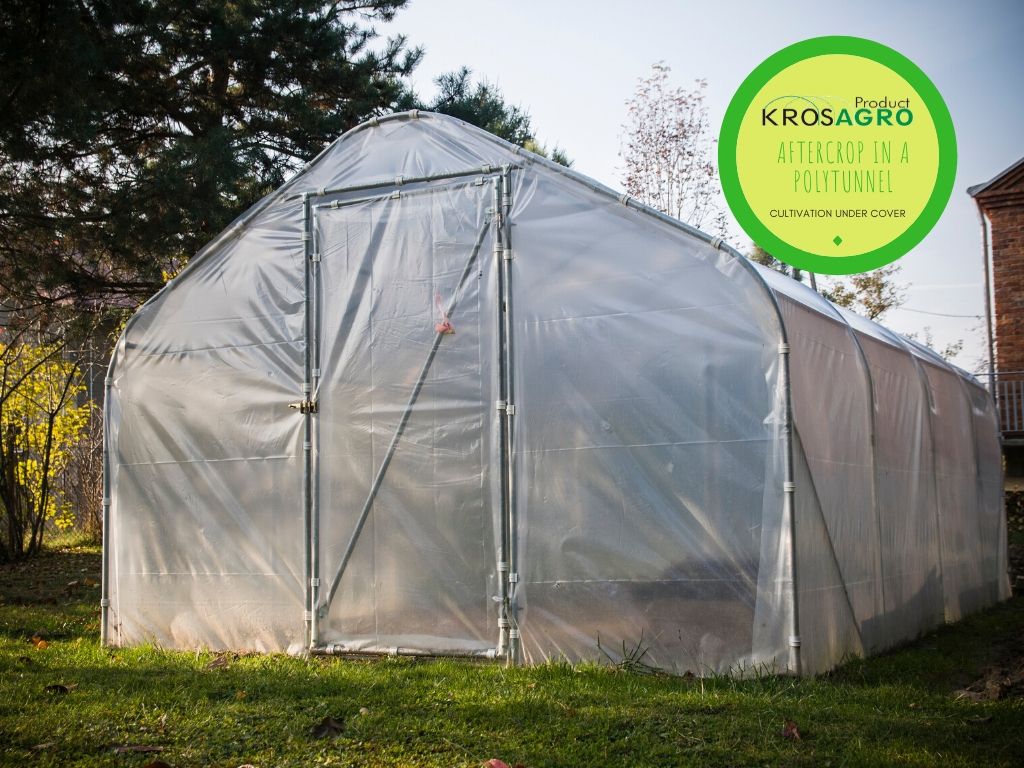Aftercrops in a polytunnel contributes to large amounts of vegetables in a small space. Only a few people can benefit from a large garden with a spacious structure for cultivation under cover. However, this is not a reason to give up greenhouses and hobby gardening. By using the right varieties, you can organize your site inside and outside the tunnel for abundant harvests. This time on this Krosagro blog, we will advise on how and in which order to grow plants.
Contents
Aftercrops in a polytunnel
Planning forecrops, main crops and aftercrops is a common practice for gardeners. It would be difficult to gather all information on concepts, techniques and specificities of each method in just one article. To find out more, we encourage you to read various documents. We will here focus on general practices, as an introduction for inexperienced gardeners. As a rule and especially for thermophilic species, plants can be planted outside when frost is definitely gone. However, if you want to avoid cold damage and safely grow in spring, seedlings and cuttings should be set in a polytunnel. As an additional protection, mini foil tunnels can be combined with full structures. They act as a cold frame and seedbed.
How to make the most of your space in a polytunnel
Numerous systems and tips are available in books and on the web. However, before implementing them, it is worth checking whether these are effective, as well as seeking advice from those who have a bit of experience. From what we know and based on conversations with gardeners:
• onions, broad beans, carrots and parsley can be sown with radish, lettuce and dill, without any negative effect on their growing process. Importantly with coordinate cultivation, the proximity of one plant has a positive effect on the surrounding ones. It is also worth noting that this combination looks very aesthetic. As soon as the first crop is harvested, the next one can be introduced.
• dill and radish can replace lines and borders which separate one bed from another
• By combining small seeds with late ripening plants, the amount of weeding is reduced
Which aftercrop to choose in summer?
These are planted in July or August immediately after harvest, and dug in autumn. However, they can be left in spring, for later digging. This procedure is called soil mulching. This is beneficial when cultivating nightshade vegetables. In order for these to develop fully and go through each growing stage, a soil with an appropriate pH is necessary. That is why we tend to upgrade the existing substrate. Regarding summer aftercrops, yellow lupine, phacelia, buckwheat or bean are the most commonly used. Vicia, rapeseed or rye are usually chosen for winter.
Green manure as aftercrop
The previously mentioned plants should be dug into the ground with stems and leaves, after having matured for several weeks. This must be done before seeds and shoots harden. A rototiller will come handy for this task, while spade and fork will be enough for smaller surfaces. Disintegrated plant elements will then decompose, leading to soil enrichment with humus and minerals beneficial for crop development.
Aftercrops in autumn under cover
Remember not to plant species of the same family on the same site. Such action increases the risk of developing pathogens and appearance of pests. Diseases and pests can cause a lot of damage, remain in the ground, spread to other plants and lead to soil fatigue on the long run. Crops of the same type require similar macro and micro elements. Therefore, deficiencies may appear, with possible disruption of growth.
